
Pola Negri……polanegri.com
Today we remember Pola Negri…she passed away in San Antonio on this day in 1987.
She was born Apolonia Barbara Chalupiec in Lipno, Poland, and from that day, for the next 90 years, her life was full of intrigue and mystery…with just a touch of fantasy. Throughout her career, she would regale stories that her parents were a Gypsy queen married to a Polish revolutionary; a Polish revolutionary couple, who were sent to Siberia for fighting against Russian domination of their homeland; and a Polish noblewoman married to a Gypsy violinist. She was in fact the daughter of a Jerzy Chalupec, a Slovakian tinsmith, and his wife Eleonora Kietczewska, a washerwoman. Her mother came from one of Poland’s oldest families, but was ostracized because she chose true love over blood.
Eleonora gave birth to a daughter, and she was raised in poverty by her single mother after her father was imprisoned by the Russians in 1902 and sent to Siberia.
According to the story put forward by her studio publicity department, she was “the last child born in the 19th Century—a few minutes before midnight in the final hours of 1899.” This date is even on her headstone. However, other biographies of her life list her birth year as 1897, 1894 and 1901.
Apolonia and her mother Eleonora fled to Warsaw with limited funds, but enough to open a small grocery store to support Eleonora and her daughter. She was constantly pleading to her mother to allow her to attend a ballet school….because she hated regular school so much. According to reports, she was accepted at the Warsaw Imperial Ballet school in 1911, and spent the next two years refining her ballet techniques, and waiting for that opportunity at stardom. This came in 1913 when she joined the Warsaw Ballet Company, and was the lead in “Coppelia” which received good reviews.
However, a bout of tuberculosis left her lungs weakened, and her strenuous ballet days were over. After a trip to the theater to see “Cinderella,” young Apolonia became obsessed with the idea of becoming an actress. Her mother objected because of her still-fragile health, and so she applied behind her back to the Imperial Academy of Dramatic Arts. So nobody would find out, she used the shortened name “Pola” and chose the last name “Negri” in honor of the Italian poetess Ada Negri. She was accepted at the age of 15…way younger than the other students.
Demonstrating her talent in a number of productions, she graduated through Warsaw’s Little Theater, and then the Polish National Theater Rozmaitosci.
While dealing with the effects of World War 1, Pola delved into films and gained attention with some Polish movies, where she developed the femme fatale role, and with her captivating eyes and sensual dances, ruined the lives of the men who fell for her.
Soon, she located to Berlin to star in the increasingly-popular German productions, which kicked opened the door for her in the United States. The movie that was her ticket to Hollywood was the 1919 film “Madame Dubarry” ( later renamed as “Passion”) where her erotic performance took Europe and the United States by storm. It was directed by Ernst Libitsch, who already had gained a reputation for his craft.
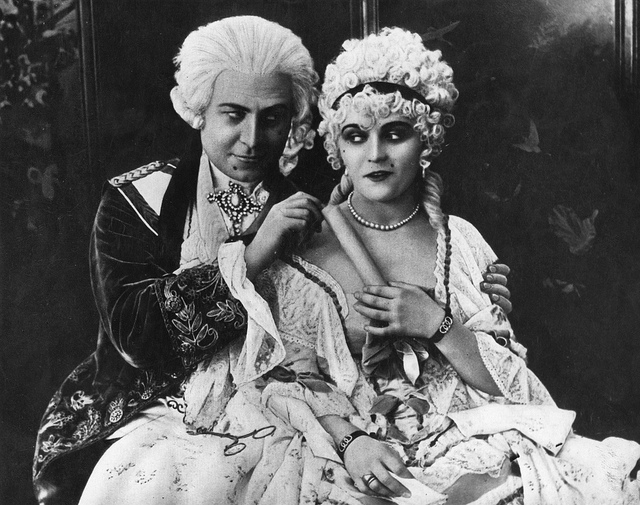
Pola Negri in “Passion”…..Silent London
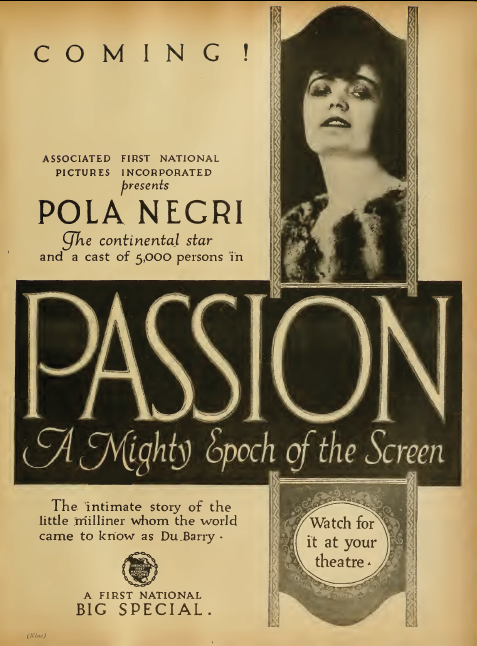
Poster for “Passion”….Wikipedia
In the early 1920’s, she arrived in New York to further her career in America, becoming the first European film star in Tinseltown, and becoming one of the famous faces of Paramount Pictures. Libitsch came too, but before he signed with Pola’s studio, he was snapped up by United Artists and Mary Pickford to boost her career. The Negri – Libitsch team that had conquered the German film industry was broken.
Now, Paramount had a dilemma. They already had a star “vamp” in the form of Gloria Swanson. Consequently, over the next five years, Pola’s films failed to achieve the success that Paramount and Pola Negri, had hoped for. To save her career, the studio cooked up some luscious publicity to propel the intrigue of Pola Negri even higher.
One of the stories released was concerning her marriage to a Polish Army Officer, Count Eugeniusz Dąbski, which gave her the name and title of Countess Apolonia Dąbska-Chałupec. She was still a teenager when this marriage took place. After a long separation period, Negri and Dąbski’s union was dissolved in 1922.
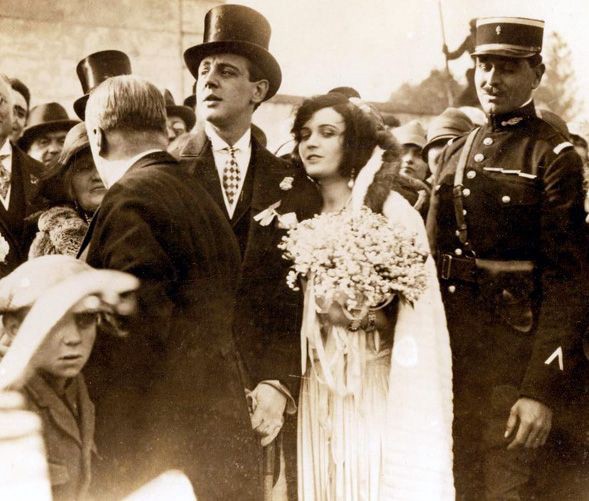
Pola Negri and Count Eugeniusz Dąbski at their wedding (1919)…thehairpin.com
But once a Countess…always a Countess, and Pola Negri played the role well. The press loved her as she paraded around Hollywood with a cheetah on a leash, while setting new fashion trends by introducing red painted toenails, and also sporting fur boots and exotic turbans. Pola truly was the “master of publicity and self-promotion.”

Pola Negri setting fashion trends….Monovision
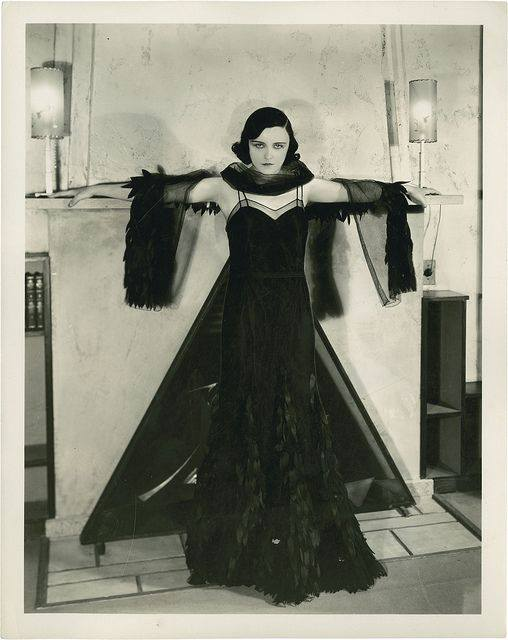
Pola Negri…Vamps and Flappers of the 1910’s, 1920’s and early 30’s….Facebook
Grand outfits, a lavish lifestyle, constant appearances at Hollywood parties, and the rumors of torrid love affairs, all kept the rivalry between Pola, Gloria Swanson and Marlene Dietrich constantly in the tabloids for a receptive public.

Pola Negri in the mid 1920’s….Pixels
After a short time, the team of Negri – Libitsch was re-established, with the result being the box office hit “Forbidden Paradise” about Catherine the Great and her search for love.
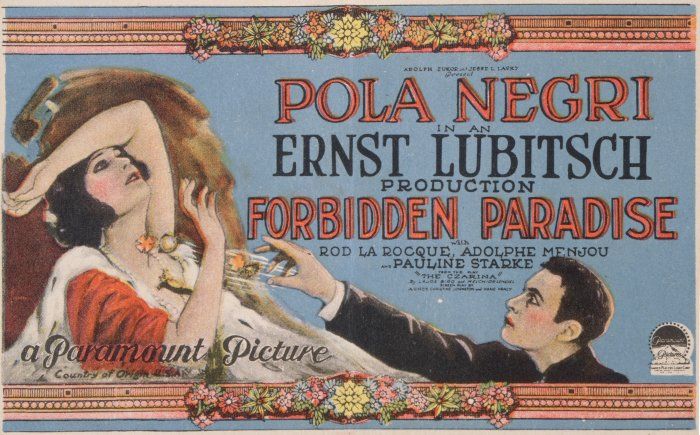
Poster for “Forbidden Paradise”….IMBd
Her own life was emulating this film, and Pola Negri had highly-publicized relationship. One was with the recently-divorced Charlie Chaplin, and she almost became Mrs Chaplin. The newspapers lapped it up with headlines like “The Queen of Tragedy to wed the King of Comedy.” In fact, during an interview, Charlie Chaplin put his arm around Pola Negri and was quoted as saying that some day there would be a Mrs. Chaplin number two, and “Pola was the gal.”

Pola Negri and Charlie Chaplin….Pinterest
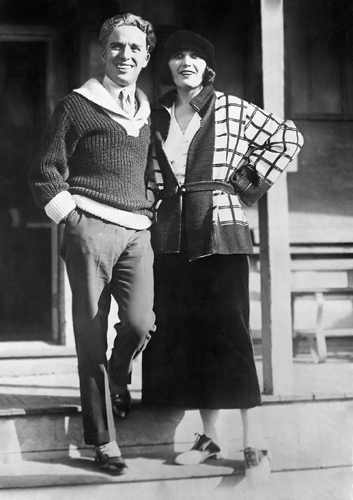
Pola Negri and Charlie Chaplin…Wikipedia Commons
Had the marriage eventuated, there were those who speculated that the team of Chaplin and Negri would have rivaled the power couple of Mary Pickford and Douglas Fairbanks. However, the relationship soured. But soon Pola was making more “romantic” headlines.
The occasion was a lavish costume party at the beachside Santa Monica home of actress Marion Davies. Their eyes met, they were formally introduced, and they danced the tango across the floor as every eye in the room followed them. It was here that Pola Negri met the man she would always refer to as “the love of my life”…Rudolph Valentino.
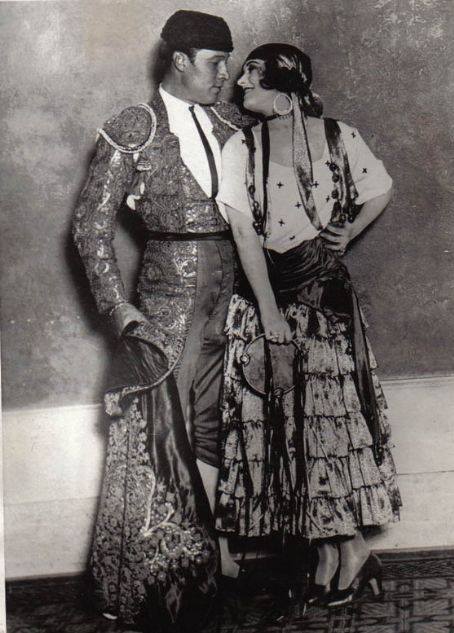
Pola Negri and Rudolph Valentino on the night they met….moviefanfare.com
For seven months, they were the glamour couple of Hollywood…and they loved the celebrity status their relationship brought.

Pola Negri and Rudolph Valentino….thehairpin.com
However, on August 15th, 1926, Valentino was rushed to hospital after a collapse. He was operated on for appendicitis and perforated ulcers. Daily updates were issued of his health, and he seemed to be on the road to recovery when infection set in, and he lapsed into a coma which led to his death on August 23, 1926 at the age of 31.

Death of Rudolph Valentino…..newspapers.com

The death of Rudolph Valentino…..Worthpoint
Mass mourning followed, and Pola Negri who was in Los Angeles at the time, made a hurried ( and highly publicized ) train trip across country to New York where her lover died. Valentino’s funeral was attended by many Hollywood celebrities, but the one who got the most attention at the service was Pola Negri. On the journey she fainted several times, and soon after arriving at St Malachy’s Church, she collapsed again next to the coffin. Many times during the service, her sobbing could be heard echoing throughout the church. Inconsolable, she told anyone who was within earshot that she and Rudolph were to be married, and she reportedly even claimed that she was his widow.
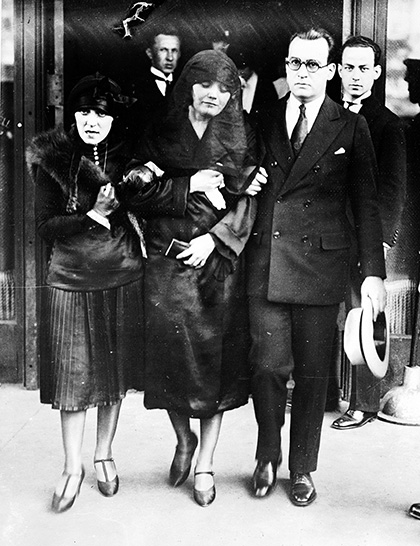
Pola Negri being escorted at Rudolph Valentino’s funeral……lrb.co.uk
Rumor has it that she had previously arranged for a large floral arrangement to be place on the coffin spelling the word P-O-L-A. If so, it was one of many floral tributes to Valentino…others that draped his coffin came from his former wife Winifred Hudnut (known professionally as Natacha Rambova), and also an eight-foot wreath of red roses, larkspur and asters from his associates at United Artists Corporation.
Pola Negri issued this statement following his death:
I am happy that everything has been made so lovely for Valentino in death. We were really engaged to be married, but the fact that we both had careers to follow accounts for this delay in our wedding plans. My love for Valentino was the greatest love of my life; I shall never forget him. I loved him not as one artist might love another but as a woman loves a man. I loved the irresistible appeal of his charm — the wonderful enthusiasm of his mind and soul. I did not realize how ill he was or I would have been here before his death; he kept the seriousness of his illness from me.
However, any goodwill for Pola Negri as Valentino’s “widow” evaporated when eight months after his death, on May 14th 1927, Pola Negri married a Georgian self-styled “Prince” Sergiusz Mdivani.

Pola Negri and “Prince” Sergiusz Mdivani…..Georgia Journal
Public opinion soured against her for marrying so soon after Valentino’s death, but she rejoiced when she found out she was pregnant. Always wanting a child, she concentrated on her health, and considered giving up acting altogether. Sadly, she lost the child, and she grieved for the rest of her life. She and the “Prince” divorced in 1931.
To relaunch her career, she returned to live performances, singing gypsy ballads and songs, and her vocal talents saw her cast in her first spoken movie role in “A Woman Commands” and her song from the movie “Paradise” became a hit.

A Woman Commands poster….Bridgeman Images
Despite this, Hollywood roles dried up, and so Pola returned to the stage and the movies in Europe. This move proved to be her downfall. She appeared and sang in the movie, “Mazurka,” which apparently caught the eye and ear of Adolph Hitler, and she became known as “the Fuehrer’s favorite artist.”
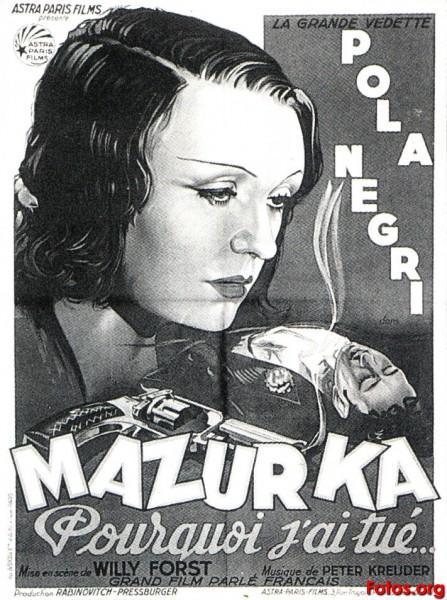
Poster for “Mazurka”…filmaffinity.com
The rumor mill was working overtime, and soon it was widely reported that she had begun a relationship with Hitler, and they would marry. In her autobiography she denied it all claiming that she had never even met Adolph Hitler. In fact, a French magazine published an article claiming that she could “twist the Fuehrer around her little finger.” She subsequently sued the magazine for defamation, was awarded 10,000 francs in the settlement, and the magazine was ordered to print a retraction.
She decided to return to the United States to see if she could resurrect her career in Hollywood. When she arrived in New York on a cargo ship, she had little money, about $100 in her purse, a faded reputation, and no prospects. She was 44, still strikingly beautiful, but her former career in silent movies was just a thing of the past. Sadly, she had been forgotten, apart from some unpopular news stories over recent years, and a few lawsuits brought against her for unpaid bills.
She scored a role in a comedy movie called “Hi Diddle Diddle,” which allowed her to pay off some debt, but the reviews were not kind, with The New York Times reporting that the movie reintroduces her “and proves that time has neither dimmed her beauty….or improved her acting.”

Poster for “Hi Diddle Diddle”….IMBd
Heiress Margaret West had met Pola Negri back in the 1930’s, and she herself had performed in vaudeville and on radio. She was the daughter of George Washington West, a wealthy oil man and rancher, who established the Texas town George West.
In 1948, Margaret once again befriended Pola in Los Angeles, and encouraged her to return to Paris, gather or sell her possessions, and then bring her mother to the States to live in her Santa Monica home. This gave Pola a chance to see old Hollywood friends, spend time with her mother, and she and Margaret invested in real estate to raise funds for Catholic Charities.
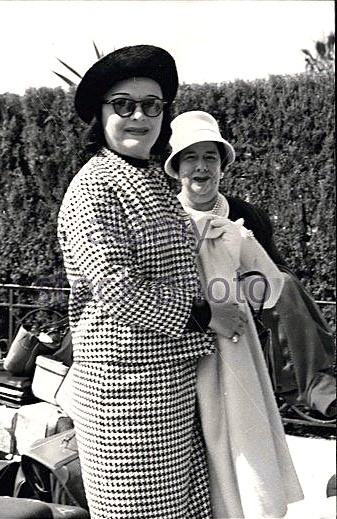
Pola Negri and Margaret West….Pinterest
According to legend, in 1950, director Billy Wilder made an approach to Pola to star in his new movie “Sunset Blvd.” There are various stories as to why the role of Norma Desmond didn’t come her way, but whatever happened, it went to her old rival Gloria Swanson, who was nominated for an Academy Award for her performance.
One thing she proudly achieved at this time happened on January 12th, 1951 when Pola Negri became a naturalized U.S. citizen.
Sadly, her mother Eleonora was diagnosed with terminal pancreatic cancer, and she passed away in 1955 at the age of 93. To help cope with the grief, Margaret and Pola traveled to San Antonio in April 1957 to meet Margaret’s family, and they took up residence at the historic Menger Hotel.

Menger Hotel…Author’s photo
It was here that Pola Negri fell in love with San Antonio. She was mesmerized by Fiesta, and according to Chair and Associate Professor of Drama at St. Mary’s University, Bernadette Hamilton-Brady, after watching the Fiesta Flambeau Parade from her hotel balcony, Pola Negri said, “It’s all been such heaven. You know, some day I wouldn’t mind living here.”
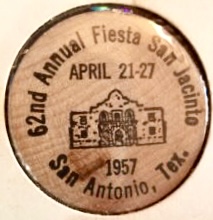
Fiesta wooden nickel 1957…..ebay.com
After two years of living at the Menger, and enjoying life in San Antonio, the two “Golden Girls” decided to make San Antonio their permanent home in the new residence that Margaret had built. Writing in her autobiography, Pola recalled that the suburb where they lived “in many ways resembles Beverly Hills.”

Pola Negri and Margaret West’s San Antonio house…..Author photo
There were trips back to Los Angeles for Pola Negri, and on one occasion she was recognized with her Star on Hollywood’s Walk of Fame. It can be found at 6933 Hollywood Boulevard.

Pola Negri’s Hollywood star…..Wikimedia Commons
By the way, she was also the 11th star in Hollywood history to place her hand and footprints in front of Grauman’s Chinese Theater.

Pola Negri’s hand and shoe prints in Hollywood……Wikimedia Commons
Pola Negri and Margaret West lived in the San Antonio home until Margaret’s death from heart failure in 1963. Margaret West is buried in San Antonio with other members of the wealthy West family.
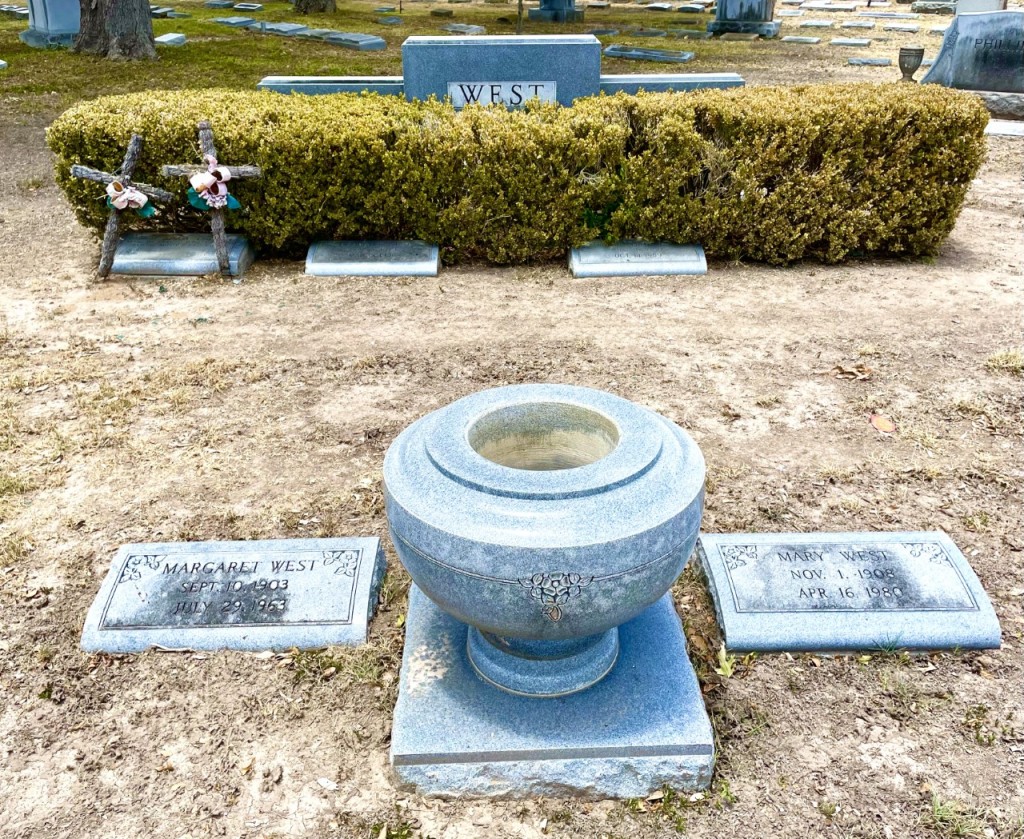
Margaret West family grave….Author photo

Margaret West gravestone in San Antonio…..Author photo
Pola Negri was one of the beneficiaries in Margaret West’s estate. The other was Margaret’s niece Mary. In the will, Pola received $1,250 a month (over $11,000 in 2022 dollars) the use of the home they shared, and ownership of all furniture and art objects in the house. Pola stayed in the home for a while, but later moved to a downtown condominium that Margaret West had bequeathed to her, and it was here she spent her final days in San Antonio.

Pola Negri’s San Antonio condominium complex……Author photo
She lived the rest of her life as a recluse, but she was coaxed out of this self-imposed exile to star in one more movie. At the age of sixty seven, she is almost unrecognizable as Madame Habib, but she gave the film industry a final wave goodbye in the 1964 Disney movie “The Moonspinners,” starring alongside a young Hayley Mills and renowned actor Eli Wallach.
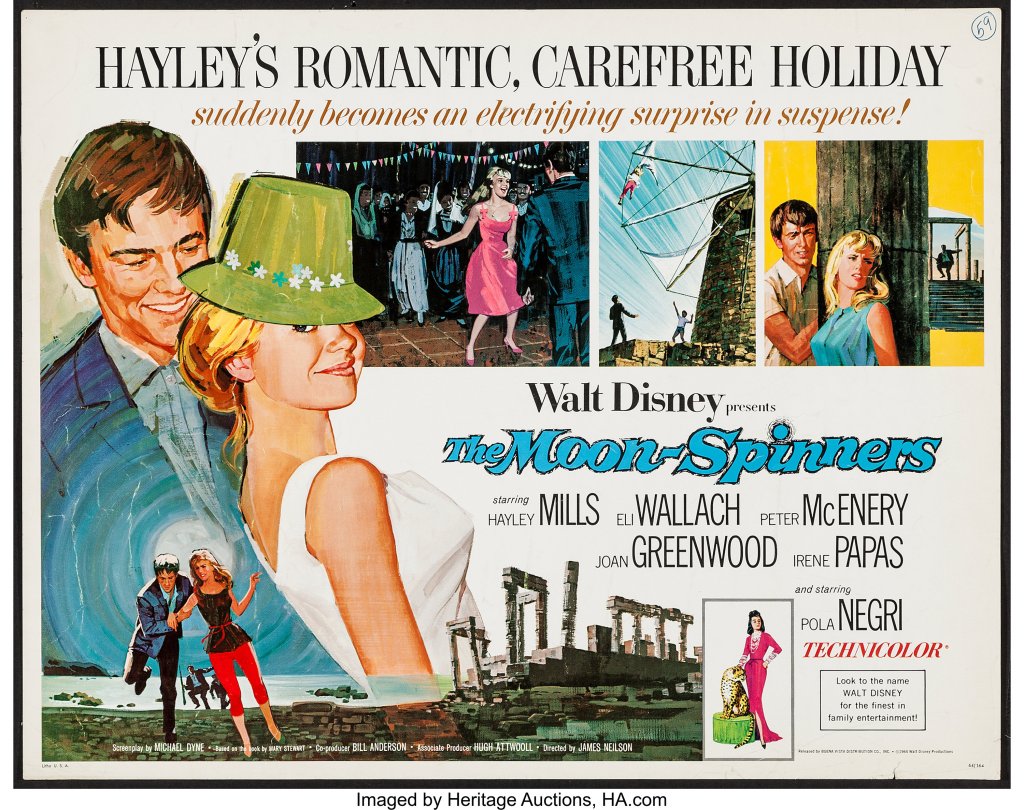
The Moonspinners poster…..Vintage Movie Posters
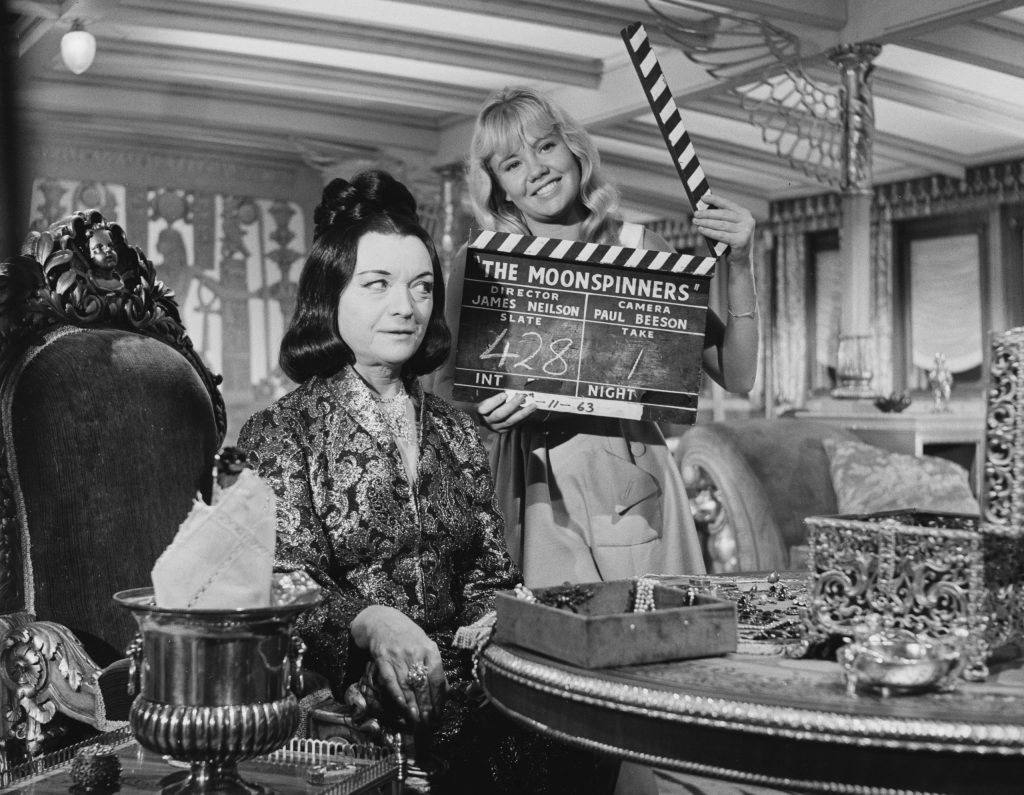
Pola Negri and Hayley Mills…factinate.com
Ironically, t
Ironically, the film gave her the chance to act alongside a cheetah, and so seizing on the opportunity, Pola Negri posed with the cheetah in publicity photos, which once again propelled her in the limelight.

Pola Negri and cheetah ….Pinterest
However, despite her penchant for privacy, and during her three decades living in obscurity in the Alamo City, she had a select group of confidants in San Antonio who ensured she was never forgotten. One of them was the philanthropist, art lover, and lawyer, Gilbert Denman (there is an earlier reference to him in a previous article on this blog in regards to his contribution to the San Antonio Museum of Art )
Another close friend was Reverend Louis Reile, the director of the Cinema-Arts Seminars at St Mary’s University. He invited Pola Negri to the first of his “HemisFilm” festivals in June 1968, presenting her with an award addressed: “To Miss Pola Negri for her extensive contribution to artistic international cinema, June 5, 1968.” She was overjoyed to receive the award and recognition, and it was the start of a deep friendship between the movie star and the priest.

Photo…The Times
This was one of the few times she appeared in public in San Antonio, and it began a longterm relationship which eventually led to the bequest of her papers to St. Mary’s University.

Pola Negri and Father Louis Reile…..The Blume Library St Mary’s University
During this time she led a quiet life, and though rarely seen, she did manage to sneak into cinemas to catch up on the latest movies and dine at her favorite San Antonio restaurant La Fonda. She also spent time with her close circle of friends and contributed to charitable and religious organizations, donating to the arts and to higher education in San Antonio. During this time, Pola Negri served on the Board of Directors of the San Antonio Symphony and the San Antonio Theater.
A deeply religious Roman Catholic, she also financially supported the Seraphic Order of Polish nuns at Our Lady of Czestochowa, south of the city, and today, in the small chapel there, a portrait of Pola Negri hangs next to Poland’s patron.

Our Lady of Czestochowa Shrine in San Antonio….Author photo

Pola Negri portrait at the Our Lady of Czestochowa Shrine……Author photo
Another portrait of her, painted by Tade Styka in 1924, can be found at the San Antonio Museum of Art

Portrait of Pola Negri……..San Antonio Museum of Art
Her health declined during her eighties until she was hospitalized in 1987. She passed away in her sleep at the Northeast Baptist Hospital in San Antonio on August 1st, 1987 suffering from pneumonia. Following her death it was revealed that she had also been suffering from a brain tumor for two years for which she refused treatment. Pola Negri was 90 years of age.
She donated her personal library to Trinity University in San Antonio, and to Saint Mary’s University, she gave a large collection of memorabilia, including several rare prints of her early films. A large portion of her estate also went to Saint Mary’s University, which also established a scholarship fund in her name.
Pola Negri was interred in Calvary Cemetery, East Los Angeles next to her mother, Eleonora, who died in 1954 from pancreatic cancer

Final resting place of Pola Negri…Los Angeles Morgue Files
During her life Pola Negri was many things to many people, but according to the Pola Negri Appreciation blog, she was “a vamp by reputation, a tragedienne in practice, but a stunningly gifted actress in truth.”
We remember Pola Negri who chose to live her final years in San Antonio, and passed away 35 years ago today.
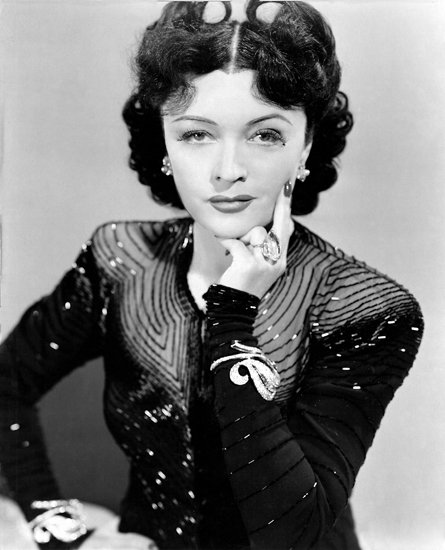
Pola Negri…..Andrew L Stone Productions
Additional stories about Pola Negri:
- In 2015, Pola Negri was referenced in the popular English TV series “Downton Abbey” when Lady Mary emerges from a makeover, and Lady Crawley comments, “Pola Negri comes to Yorkshire!”.
- During her life she mastered five languages….Polish, Russian, German, French and English.
- Beulah Livingstone, an old friend of the late great silent film star Rudolph Valentino, remembered his love for Pola Negri. “He liked to cook for her,” and Miss Livingstone recalled the special dish Rudolph would make for Pola, humorously naming it “Eggs Pola-naise:” a dish that consisted of “ten eggs, 1 cup of fresh corn cut from cob, 1 onion, 1 can tomato soup, 1 green pepper, 1/2 clove garlic, and 1 tablespoon of butter. Heat butter, fry chopped onion, pepper and garlic until only slightly brown. Stir in tomato soup, add corn, and seasoning. Simmer for 1/2 hour. Remove from heat. Cool. Break eggs in bowl and beat only slightly. Combine with cooled sauce. Turn into buttered egg pan and scramble eggs until soft and smooth. Serve with large piece of Italian Bread. Serves 6.”
- Pola Negri was born in Lipno, Poland….and died in San Antonio Texas. The cities share a common bond apart from the life of Pola Negri. They both have the same patron saint….Saint Anthony.
Sources:
stmarytex.edu Bernadette Hamilton-Brady MFA Chair and Associate Professor of
Drama at St Mary’s University
Los Angeles Times
Texas State Historical Association
inyourpocket.com
europeana.eu
thehairpin.com
timenote.info
vanityfair.com
allaboutrudy.org
academic.oup.com
peoplepill.com
Follow My Blog
Get new content delivered directly to your inbox.
